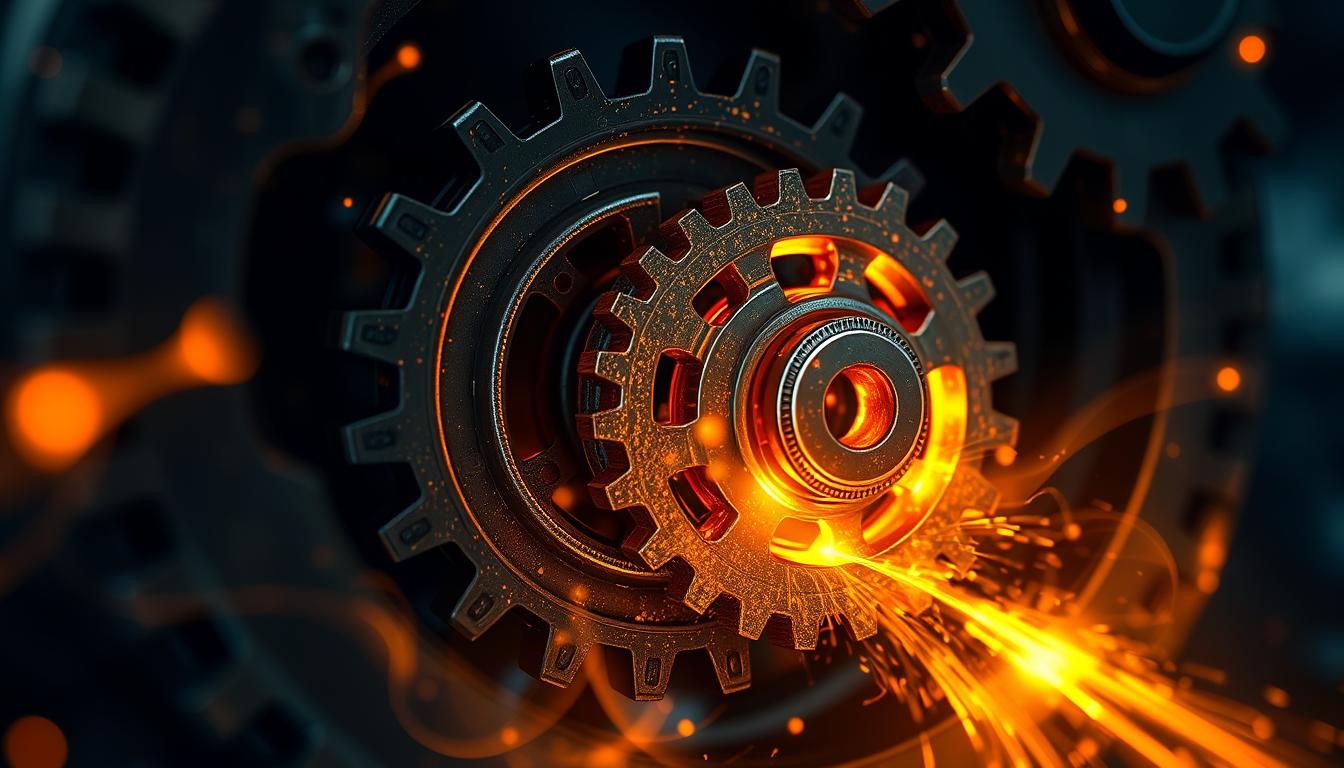Energy loss in mechanical systems is a big problem. It affects productivity and efficiency in many industries. Innovations in gear technology help reduce this waste of energy. Businesses want to make their operations better while using less energy in gears. New designs and materials for gears are making machines work better. This article will talk about these new solutions. We will look at how they save energy and point out why saving energy is important. Making things more sustainable and cost-effective matters in today’s world.
Understanding Energy Loss in Mechanical Systems
Energy loss in mechanical systems poses big challenges, especially in gear tech. It means the mechanical energy that can’t be used anymore. Knowing what energy loss is helps tackle its effects in many systems.
What is Energy Loss?
Energy loss includes several types, mostly due to mechanical inefficiencies. These inefficiencies often turn energy into heat or friction in gears. This lowers machinery performance. It’s key to solve these issues to improve gear system designs and function.
Common Causes of Energy Loss in Gears
Knowing why energy gets lost is crucial for making things better. Main reasons are:
- Friction in gears: Gears touching creates heat and loses energy.
- Misalignment: Gears not lined up right increase friction.
- Poor lubrication: Not enough grease increases friction and damage.
- Low-quality materials: Weak materials cause mechanical failures and more energy loss.
The Impact of Energy Loss on Efficiency
Energy loss greatly affects gear efficiency. More energy is needed for machines with high energy loss. This leads to higher operating costs. Many studies show a lot of the energy used in industries is lost through gears. Tackling energy loss is essential for better efficiency and to stay competitive.
Tackling Energy Loss: Innovations in Gear Technology
Gear technology is improving how machines work. Using new materials, reducing friction, and better lubrication help save energy. We’ll explore how these upgrades impact gears and machinery.
Advanced Materials for Reduced Friction
New gear materials are being made to cut down on friction. Things like composite materials and special alloys make gears stronger. They can take on more weight without losing performance.
Surface treatments are making these materials even better, reducing resistance. Studies show that the right material mix can cut friction by 20%. This helps save a lot of energy in machines.
Smart Gear Systems and Automation
Smart gears are changing how machinery works. They use IoT technology to find problems, adjust settings, and optimize performance. By collecting data, they make machines smarter and more energy-efficient.
Adding smart tech to gears is a big deal. It lowers energy use and increases dependability. This is important in fields like cars and planes.
The Role of Lubricants in Energy Efficiency
Choosing the right lubrication is key to saving energy. Today’s lubricants, some with tiny particles or made from synthetic oils, are very effective. They make gears run smoother and cooler.
By improving lubrication, gears can work up to 30% better. This makes good lubrication essential for energy efficiency.

| Technology Type | Benefit | Impact on Energy Loss |
|---|---|---|
| Advanced Gear Materials | Higher load capacity | Reduce friction by 20% |
| Smart Gear Systems | Real-time diagnostics | Lower energy consumption |
| Energy-efficient Lubricants | Enhanced lubrication | Improve efficiency by 30% |
Future Trends in Gear Technology
The way we think about gear technology is changing fast. We’re seeing artificial intelligence help with predictive maintenance. This tech checks gear performance in real-time. It helps spot problems before they become big, saving time and energy.
This smart approach cuts down on waste. It also has less impact on our environment than old repair ways.
We’re also seeing greener options like biodegradable lubricants. These are better for our planet and don’t skimp on how well gears work. Companies are getting behind these eco-friendly choices more and more.
Then there’s the rise of 3D printing. It’s making gear design and making both smarter and less wasteful. With this tech, gears can be made just right for their specific use.
These steps forward mean better gear function and a nod to taking care of our world. Looking ahead, gear tech seems set to offer even more exciting improvements.


